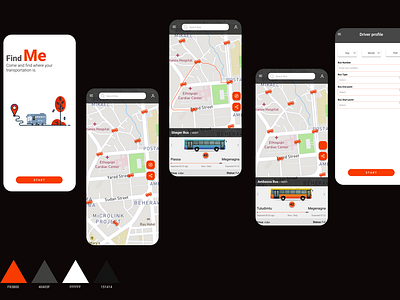Case Study Public Bus Monitoring mobile app
Define the problem: Before starting the design process, it's important to define the problem that the mobile app is trying to solve. In this case, the problem might be that people have difficulty keeping track of when their bus is arriving or if it is running on time.
Conduct user research: To understand the needs and wants of the target audience, it's important to conduct user research. This can include interviews, surveys, focus groups, or other methods to gather insights about the users' needs and preferences.
Develop user personas: Based on the user research, it's helpful to create user personas to represent different types of users who might use the app. These personas can help guide the design process by providing a fictional representation of the target audience.
Define the app's key features: Based on the problem being solved and the insights gathered from user research, the next step is to define the key features of the app. For a bus monitor and tracker app, these might include real-time tracking of bus locations, alerts for delays or schedule changes, and the ability to search for specific bus routes.
Create a wireframe: A wireframe is a rough outline of the app's layout and features. It can be created using paper and pencil or a digital tool like Balsamiq or InVision. The wireframe helps to visualize the app's structure and how the various features will fit together.
Design the user interface (UI): After the wireframe is complete, the next step is to start designing the actual user interface (UI). This includes deciding on the overall look and feel of the app, as well as the specific design elements like colors, fonts, and icons.
👉 Project inquiry
